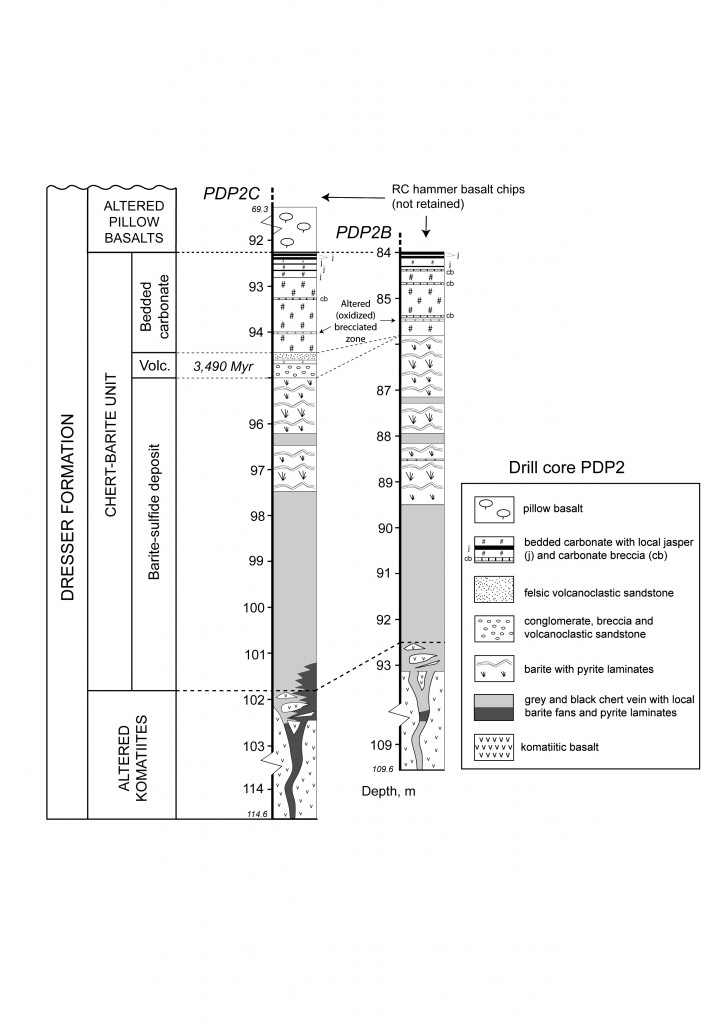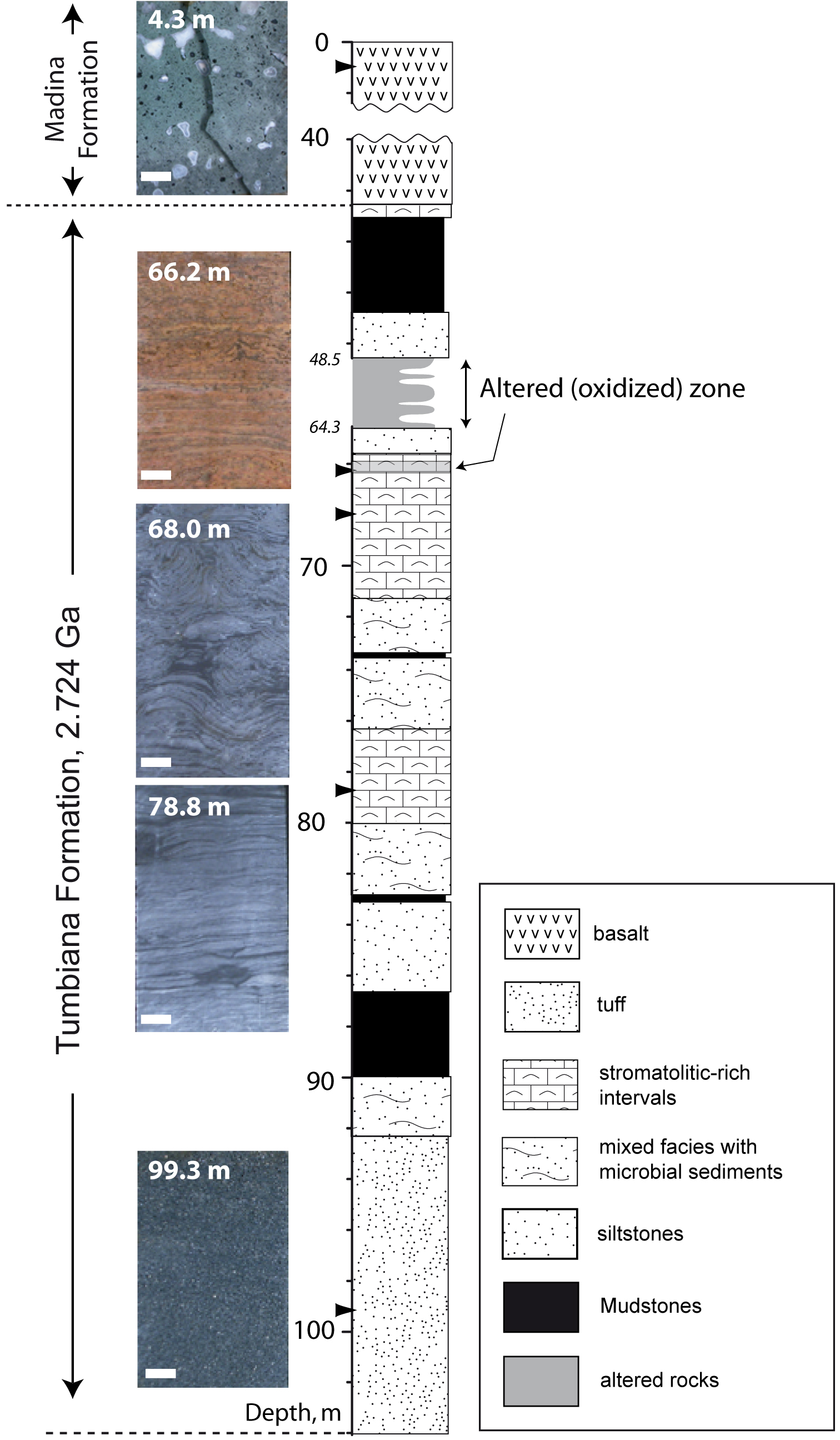Pilbara Drilling Project – PDP
July 2004, we completed one diamond drill hole of the 2.72 Ga old Tumbiana Formation (PDP 1, Fortescue Group, Hamersley Basin) and three parallel holes (PDP2 b & c) through the 3.5 Ga old Dresser Formation (Warrawoona Group, Pilbara Craton) in the southeastern part of the North Pole Dome.
PDP1
The top of drillhole PDP1 intersected generally fresh, low-grade metabasalt of the Maddina Formation and a pristine section of stromatolitic limestone, sandstone with ripple laminates, black shale and volcaniclastic sediments.
Synthetic stratigraphic log of the Tumbiana drill hole. After Philippot et al., 2009.
PDP2
The drilling site was chosen in the southeastern part of the North Pole Dome, where bedded sedimentary rocks of the Dresser Formation dip 40◦ south-southeast. Three closely spaced drillholes were sited to the South of the surface outcrops, in the stratigraphic hangingwall, and were oriented at 50◦→330◦ in order to intersect the bedding at right angles. The first hole (PDP2a) was drilled with HQ core (75.7mm diameter) to a depth of 50.6m through pillowed metabasalt affected by heavy surficial weathering, at which depth the hole was abandoned. The second and third holes (PDP2b-c) were located further away from the surface outcrops and drilled at 15 m distance from each other. The two holes intersected the overlying metabasalt, a bedded sequence of sedimentary rocks and the underlying komatiitic metabasalts.
 Synthetic stratigraphic log of the Dresser drill holes. After Philippot et al., 2009.
Synthetic stratigraphic log of the Dresser drill holes. After Philippot et al., 2009.
DRILLING TEAM
The drilling research team consisted of Pascal Philippot and Kevin Lepot (IPGP), Martin Van Kranendonk (GSWA, now at University of New South Wales, Sydney), Purificacion Lopez-Garcia and David Moreira (Université d’Orsay, France), Paul Van Leohout of “Mount Magnet” and his crew are thanked for their professional work and enthusiasm in obtaining the drillcore. Drilling was performed as part of a joint scientific research project between IPGP and the Geological Survey of Western Australia
FUNDING
This project was supported by funds from the Institut des Sciences de l’Univers and the Institut de Physique du Globe de Paris.

